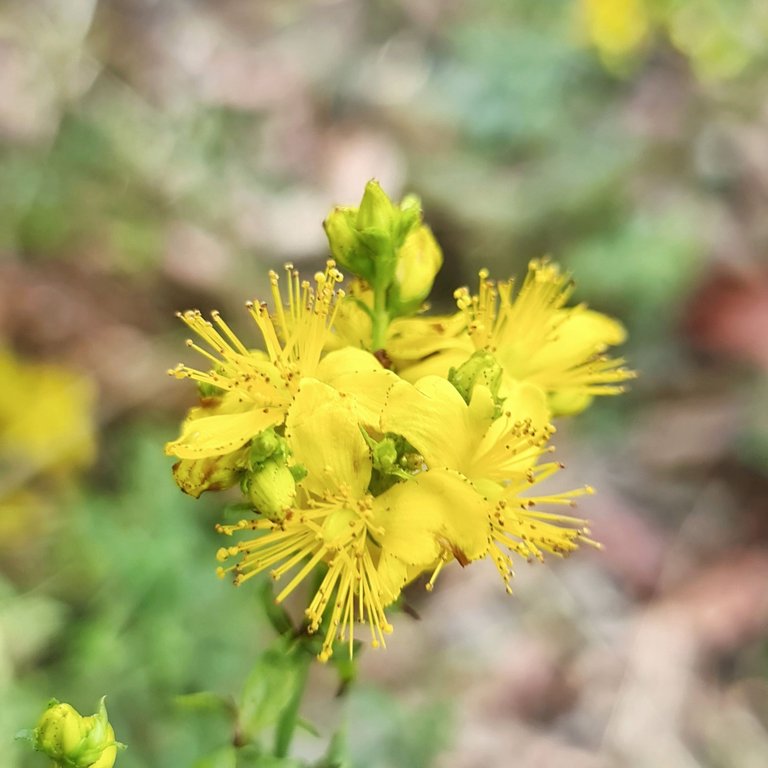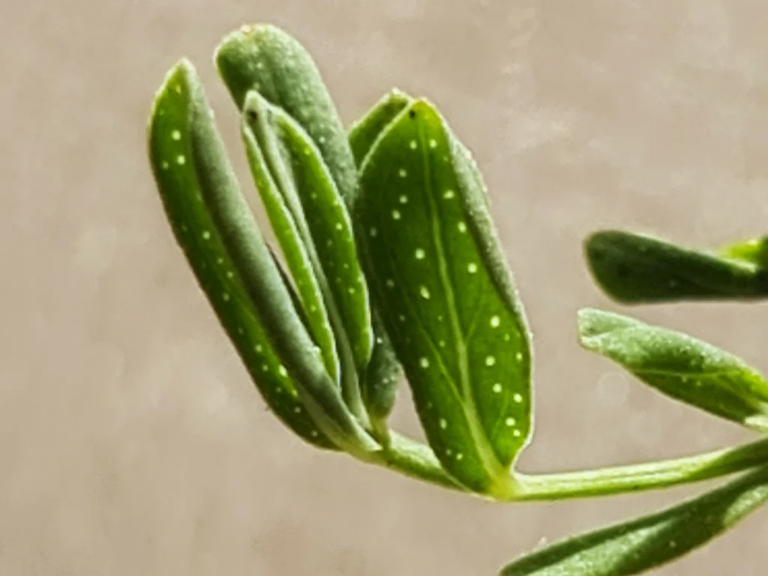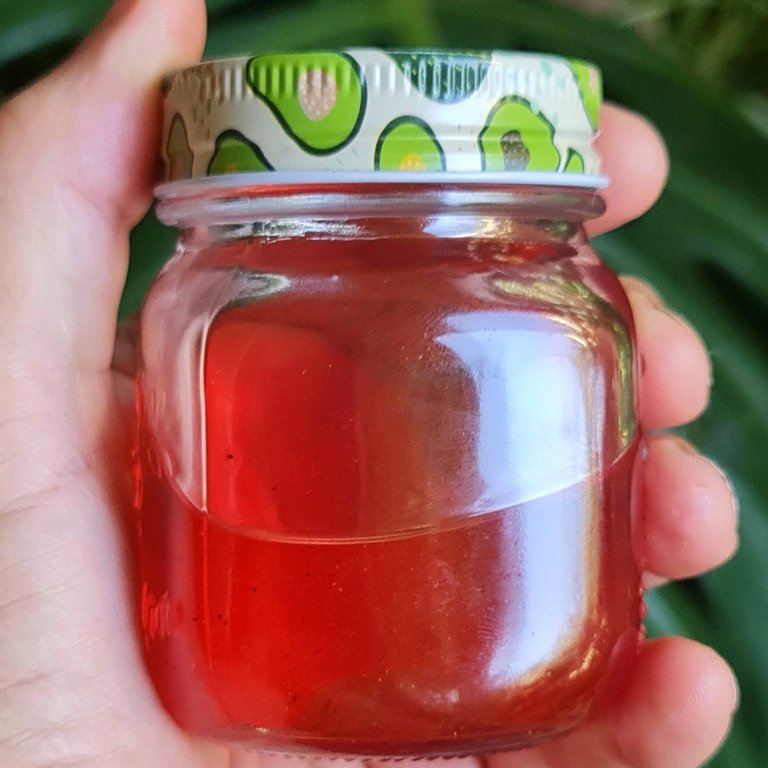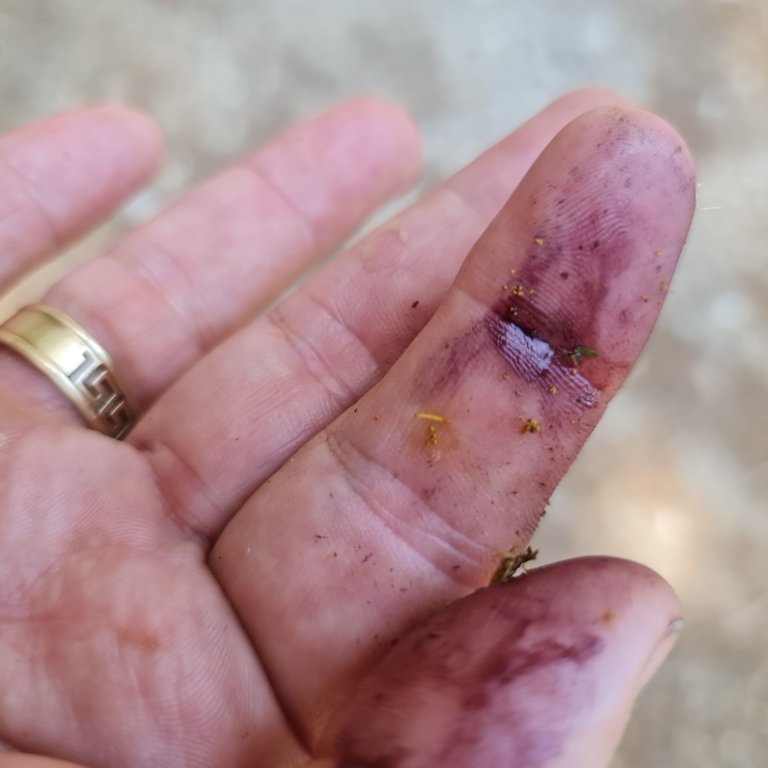St. John’s Wort (Hypericum perforatum) herbal monograph

Common names: St. John’s Wort, St. Joan’s Wort, Guan Ye Lian Qiao
Taxonomic name: Hypericum perforatum
Family: Hypericaceae
Related herbs: other Hypericums
Area of origin: Eurasia
Parts used: flowers, buds
Can be used for: nervous conditions, depression, nerve pain, bruises
Actions: normalising, vulnerary, nervine sedative, nervous system trophorestorative, bitter tonic, hepatoprotective, astringent, vulnerably, anodyne, anti-viral, antimicrobial
Taste: sweet, oily, balsamic, warm, dry
Tissue states: atrophy, wind,. congestion
Energetics: warming, dispelling, drying
Healing constituents: hypericin, pseudohypericin, hyperforin, essential oils (sesquiterpenes), flavonoids
Warnings: Take care if you are on psychiatric medicines, St. John’s Wort can interfere with some of these. See your doctor first. Can cause allergic reactions, gastrointestinal problems and sensitivity to UV and sunlight.
Description
St. John’s Wort is an upright annual reaching to thigh high. Its 5 petalled yellow flowers grow in clusters at the end of stems. Petals can look to have ragged edges but on inspection have black dots anong their margins. – these are oil glands. There is a cluster of many stamen on long filaments in the middle of the petals.
Leaves are opposite with smooth margins and rounded ends. If you hold a leaf up to the light, you will see the transparent oil glands that let light shine through.

St. John’s Wort loves the Sun, it grows in wide open spaces where it can soak up all she’ll give. In this area, we find it in dry soils along roadsides and along the edges of the local Pine forests.
Medicinal use
For at least a millennium, St. John’s Wort has had a reputation for being able to lift moods, even before we knew of mental illness. In medieval times it was used to help strengthen the spirit, thus making the individual less prone to the effects of others, especially witches and demons.
The bright uplifting yellow of the flower is what we need when our nerves are frayed and I found when I was out harvesting some, that I could easily differentiate it from the other yellows of the many plants from the Daisy family in flower at the moment.
We now know about the role of chemicals in the body and material medicine has focused on a single component of Hypericum, hypericin that has a repeatable effect on aspects of our chemistry, lifting moods and raising spirits. More recent research points to hyperflorin as being an effective component. I find it interesting that it is used for children suffering sleeplessness due to a fear of the dark. – its light really shines through.
A note here, if you plan to use Hypericum in any way while being treated for anxiety, depression or other associated maladies, check with your treating doctor, as it interferes with the action of some medications, specifically those in the group SSRI (selective serotonin reuptake inhibitors). I believe external use as an oil or ointment for injuries is safe and won’t interfere with brain chemistry.
I’ve used Hypericum perforatum for a few years now for things related to our nerves. The petals with their jagged edges, looking almost frayed and those stamen pointing all over the place remind me of nervous conditions frazzled nerves. I like to think of the stamn as reminding me of the nerves in our fingers and toes. This is apt because Hypericum is particularly suited to painful injuries in these nerve-rich areas. An Homeopathic dose of Hypericum, taken instantly after banging fingers with an hammer can bring immediate relief (and stop people laughing at you as you dance around, shaking your hand like a mad person).
The mental and resulting physical picture we’re beginning to see is one of being effective on many aspects of our nervous system. This is how Herbalists use it. Not a silver bullet for anxiety and depression, but a soother and tonic for the nervous system, helping mood and outlook by aiding damaged and ailing nerves.
St. John’s Wort soothes overworking and overstimulated nerves, whether from physical or mental injury. Many cases of depression and the like come from a nervous system that has been overstimulated for too long. Similarly, incontinence due to stress (even bedwetting in children) and diarrhoea when it’s due to nervous conditions can be successfully treated by the appropriate taking of Hypericum. Other ailments that fit the picture are shooting pain, nerve pain, cramp and spasms of nervous origin, even some forms of paralysis.
As Hypericum stimulates and clears, it helps dispel heat and inflammation, and thus relaxes systems, organs and tissues (nerves are a kind of tissue). It is excellent for clearing the liver and helping eliminate toxins through excretion. It has a similar effect on the kidneys and bladder too. As a stimulant, it helps fight fatigue.
You might see contradictions in the list of actions and energetics above. It is calming and soothing because it stimulates tissue to clear itself, The tissue is stimulated and it, the organ and the system becomes calm.
Preparing and using St. John's Wort
St. John’s Wort is a flower of the Sun. Most herbs are harvested early in the day, before the sun hits them with its full strength but St. John’s Wort likes to be picked on a warm sunny afternoon. A few days of late have really fit the bill!
It’s an interesting plant in that the oil squeezed from the yellow flowers is a dark red. In my first year of harvesting, my hands looked like I had been an actor in a performance of Macbeth! I had crushed so many petals with my clumsy technique. This year though, a mild reddening of index finger and thumb was all, as I’d learned how to be a bit more delicate. The bloody red pic below shows how much oil can come from one flower.
The oil turns the alcohol in tinctures and the oil in oils a dark, blood red. It’s quite striking, especially when you consider that it comes from such a bright yellow flower.


St. John’s Wort makes an excellent pain killer for nerve rich body parts, is well known as a plant that can help with depression. I use it in tincture mixes that I prepare for folks who are really feeling down from long term nerve pain, neurasthenia and am trialling it as an oil and a tincture for a friend who is suffering depressed spirits because of shingles.
I prepare both tincture and oil from wilted fresh leaves. Wilting reduces the water content and helps preserve the oil for longe and the dried herb doesn’t extract well in oil – it will, but it’s much better to use wilted fresh herb. It also means that I can use a lower alcohol concentration for tinctures. A ratio of 1:2 at around 70% ABV seems to work beautifully for tinctures and a 1:3 ratio of herb to oil gives good results. .

Some of you may have seen that I've been writing a series of posts about making herbal remedies at home and drastically updating the monographs on the herbs themselves. I want to share what I know of this topic so that, as the world gets crazier, folks will have other avenues of medical care, namely those of themselves and their community. If you look back over this blog, you can see heaps of info on the topic, plus loads and loads of posts on herbs and using Australian bushfoods from a white perspective. If you haven't been around on in the @hivegarden and @naturalmedicine communities for long, you may be interested in looking back. There's w-a-a-a-a-y too much there for me to repost and the Hive system doesn't let you vote on old posts so, if you're happy with what you find, I believe that there is now a tip option...






What does it mean to dream of this herb?
To dream of any herb is to know that it is your herbal ally. It's telling you to get to know it in detail so that you can heal yourself and others.
Thanks for your contribution to the STEMsocial community. Feel free to join us on discord to get to know the rest of us!
Please consider delegating to the @stemsocial account (85% of the curation rewards are returned).
You may also include @stemsocial as a beneficiary of the rewards of this post to get a stronger support.
No worries!
woow ! you wrote this sooo beautifully and used great wording!
i'm so grateful for these kinds of posts. also that you included the "mythological" background of how people used the herb because of influence from demons and the like.
and that is so aptly formulated:
at the moment i often dream about certain plants and can recognize them in detail in my dreams :D
do you know anything about the dream symbolism of certain plants?
Thank you. I'm happy my style is appreciated!
I'm not sure about the symbolism of many plants but they all surely have one.
Generally, I believe that if you dream about a plant, that plant can help you or someone through you in some way. There again I've dreamed about a plant in my garden and found the next day that it was sick.
We are all connected in ways that we may not ever be aware of.
What do you mean with that?
i came up with the idea that the essence of the plant communicates with me through the dreams. it also does this in "real life".
supposedly every plant has its own spirit, which it manifests in the material world.
I meant that I've dreamed about plants that I hadn't noticed struggling on my garden. A sceptic would say that I noticed them unconsciously in my day to day activities and the memory came through in a dream but I believe they were telling me. We spend a lot of time together afterall.
If you want to go deeper into thinking about such things, you could try the evolutionary herbalism. They have a beautiful take on plants and people.